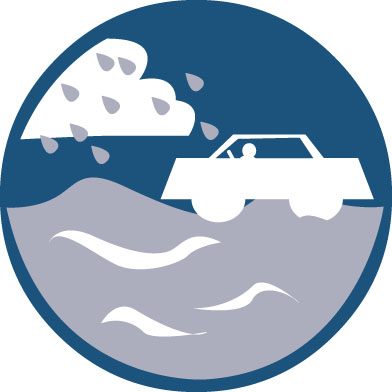Natural Disasters
Flooding

According to the National Weather Service:
- Flash flooding kills about 130 people annually.
- 6-12 inches of water can knock a person off his/her feet.
- 2-3 feet of water can float most vehicles.
FEMA offers the following guidelines on how to stay safe during a flash flood:
- Evacuate any area that will be subject to flooding, including dips, low spots, canyons and washes.
- If you come across a flooded area, do not attempt to cross flowing streams.
- Never drive through flooded roadways because the road bed may not be fully intact due to the heavy amount of water.
- Be cautious if driving at night since it will be harder to recognize flood areas.
- Do not park your vehicle near streams and washes, especially if there is a possibility of flooding.
While at McLennan Community College, these guidelines are recommended:
- Watch for rushing water over sidewalks and streets.
- Watch your speed while driving on campus roadways. Pooling water near storm drains may cause your vehicle to lose control.
- Use caution on wet streets, reduce your speed, and allow additional braking distance.
- During heavy rains, use your headlights to increase your visibility to other vehicles.
Earthquakes

No area in the United States is immune from earthquakes. They strike without warning, and the major or “initial shock” is usually followed by numerous “after-shocks,” which may last for weeks or months. An earthquake’s effect on buildings will vary from structure to structure. Sprinkler systems or fire alarms may activate due to the shaking. Building structure, stairways, and elevators will require inspection for damage following an earthquake.
Inside a Building
- Get under your desk, table or other sturdy furniture with your back to the windows.
- If you are not near any furniture, sit in a corner or with your back against a wall and face away from windows.
- Drop to your knees, clasp both hands behind your neck, bury your face in your arms, make your body as small as possible, close your eyes and cover your ears with your forearms.
- Maintain that position until shaking stops.
Outside a Building
- Move away from buildings, trees, overhead wires and poles.
- Drop to your knees, clasp both hands behind your neck, bury your face in your arms, make your body as small as possible, close your eyes and cover your ears with your forearms.
- Maintain that position until shaking stops.
- Do not enter any building until it is determined to be safe.

